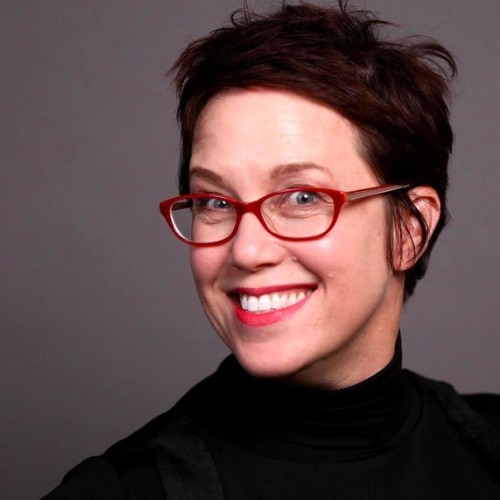Long before there was a pandemic, lots of articles were published with statistics directly linking a positive onboarding experience to employee success, engagement and retention. Then along came that pandemic, with a fully remote workforce that broke most new hire processes immediately.
Companies with robust programs have gone back to the drawing board to rework their best practices, and firms without strong systems have had to start from behind. That’s why our InsideOut Design Leader Community got together to explore and share ways for creative leaders to set new hires up for success, remotely.
Rethink the Ramp-up Plan
Whatever your typical ramp-up time was for new employees, triple it. Creative leaders agreed that while a clear 30–60–90 day plan is absolutely necessary, the expectations at each milestone should be reduced — and remarkably clear. One VP’s team is using the well-known book Radical Candor to encourage open communication throughout the ramp-up period and beyond. Another is setting professional development goals immediately, acknowledging that learning happens over time and sharing accountability with staff to achieve growth on a timeline that works for everyone.
One senior operations leader has taken the process one step further, creating two distinct tracks (one for full-time employees and one for contractors) to give each what they need to be successful.
Staff members joining the organisation for the long haul need more support for culture and can afford more time spent during intense trainings like a 2-day digital bootcamp.
Freelancers have less time to spare and are often brought on to solve immediate and shorter-term problems, so their support should reflect those realities.
In addition to setting clear success markers, resourceful creative leaders measure softer, but vital skills like EQ and relationship management. An ops leader at a huge tech company uses stakeholder mapping to guide the development of critical partnerships that will ultimately drive results. One UX leader sets goals for team integration, with examples of what success looks like, and checks in during every one-on-one meeting for progress.
Actively Build Their Network
Moving your entire team to a remote setup was difficult enough, but no-one could have anticipated the importance of the connections built by working together in real life. Without the benefit of informal interactions, new employees struggle to navigate the org structure and quickly identify their most beneficial connections. That’s where you come in.
One leader at a complex organisation created a generic org chart with generalised job titles to give new employees a sense of how key staff members fit within their groups. She also highlighted the most connected team members to fast-track the sharing of nuanced institutional knowledge. But it’s not enough to just expose your eager recruits to opportunities to connect and hope for the best.
Several senior leaders use and recommend a buddy system, but with caution. The very buddies who may know a lot (senior, tenured, successful) may be the buddies who have no time to take a rookie under their wing right now. Once you have the right buddy in place, help architect their interactions. One VP finds that scheduled shadowing works and has her buddies check in via Zoom twice a day, bring their mentee to meetings, and share actual work on projects as often as possible.
Bring Culture Front and Centre
With best intentions, leaders have scrambled to craft social events and interactions that replicate the camaraderie their teams gained through casual connections when IRL was real. Though many thoughtful leaders set up “Coffee Chats” for staff as they enter the organisation, one leader pointed out that these can backfire without some structure to that first interaction. Current staff are pulled in many directions and may not be in a great space to provide a great first impression.
To help, one crafty UX leader created a simple 2-page structured “get to know me” template for staff to complete that provides both a professional overview on one page and a personal overview on the other. Once staff have completed their own profile, they can use it over and over, saving valuable time and providing a consistent experience. Plus, new hires don’t have to guess what kind of information to share.
Beyond face-to-face virtual interactions, design leaders are building online spaces for staff to connect quickly on common interests, with channels like “Perfect Pets” or “What are you watching?” Several leaders are using Facebook’s Workplace to bring teams together, though all agreed that none of these digital stop-gaps replace the cultural information that was passed on during casual interactions in an office setting.
If you can afford it, consider dedicating resources on your team to handle onboarding entirely. These hand-picked team members can ensure seamless, uniform operations and can also serve as “culture warriors” with the responsibility to develop virtual events that reflect your team’s spirit and bring your culture to life.
Once you have a solid remote process in place, make sure you’ve got the basics covered. Here’s a quick checklist to help:
- Get the tech right. Collaborate with your IT team to know the process for tech setup — and start early! Think your new hire feels disconnected in this remote world? Imagine starting off without access to your systems…
- Create an SOP. Instead of creating one-off plans for each new hire, document a process you can follow every time to provide a consistent experience. Share your doc with business partners so they can help!
- Find alternatives. Though you may not be able to recreate every step of your existing onboarding process, decide what is most important, and find a remote way to deliver. One leader turned a full-day session into a 4-day digital experience.
Every leader agrees that remote onboarding for design teams is no easy task. Quickly fostering relationships that welcome new hires is paramount to their success. So far, it’s been challenging enough to keep anxious, overwhelmed teams connecting in meaningful ways! On the bright side, who better to craft an experience than design leaders, whose very job is to ensure exceptional customer experiences? You can do this.
Latest.

Temp-to-perm is the best way to hire today.
Hiring Insights

How to keep top talent: Strategies for successful onboarding
Hiring Insights, Ask Aquent, Training Resources

AI and the job search: What’s changed and how to come out on top
Technology, Job Seeker, Industry Trends



